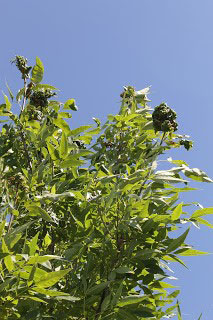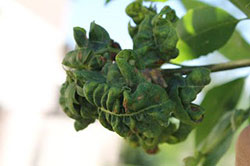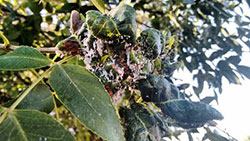Adapted from the CO-Horts blog originally authored by Eric Hammond, Adams County Extension.
 |
 |
 |
What does the Ash Leaf Curl Aphid do to trees?
During moist and humid conditions the ash leaf curl aphid (Prociphilus fraxinifolli) is able to thrive in Ash trees. These insects are a type of wooly aphid which begins feeding on the underside of terminal leaves of green ash (Fraxinus pennsylvanica) in the spring. Their feeding causes the leaves to warp and curl (giving the insect its name). Late in the summer winged individuals are produced which migrate to the roots of ash trees.
How can I treat the damage done to my tree?
The damage caused by this pest is distinct but mostly a cosmetic issue and is normally not a serious concern to the tree’s health. Treatment with insecticides is rarely warranted and sprays are ineffective once the leaves have curled, as the curled leaves provide protection for the aphids within. Systemic treatments available but can take several weeks or more to be affective and are not normally necessary for the health of the tree. If the curled appearance of the terminal leaves is distressing they can be manually removed from the tree.
My tree has a sticky substance on it from these bugs. What is that?
Infestations produce a sticky excrement which is known as “honeydew”. This sugary substance drips from affected trees in such quantity that it can coat cars, patio furniture, sidewalks or any other element of the landscape which is unlucky enough to be below the trees. The honeydew is not only sticky and unpleasant but it is also commonly colonized by gray sooty mold which give it a black appearance with often appears to stain whatever it has dripped on. It is recommended to clean the area under an infestation before sooty mold has a chance to develop.
More information can be found in CSU Publications Fact Sheet



